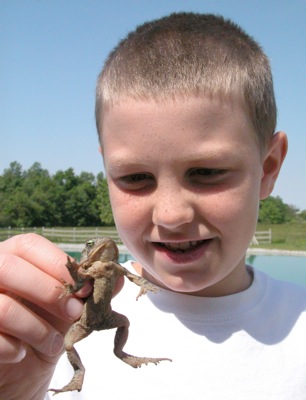Tuesday, June 3rd, 2008
State, EPA approve plan for water quality action
By Janie Southard
The Grand Lake Wabash Watershed Alliance action plan has been approved by the state and the Ohio EPA, which will allow 15 problem solving objectives to move forward.
"It's been a long time coming," said watershed Coordinator Laura Walker following Monday's board meeting. "I think it's taken about a year since the plan was submitted to ODNR and the EPA."
The objectives to address water quality problems in the watershed range from residential to agricultural. One example is to establish 2,000 acres of winter cover crops within the Grand Lake and Wabash River watershed districts in the next three years.
"We want local farmers to keep using cover crops during each of the three years. That will allow the material to get worked down into the soil and make it richer," Walker said.
The plan shows that this cover crop project would help reduce the amount of sediment (13,500 tons from a 20-acre field) flowing into Grand Lake. Total phosphorous reduction would be 15,700 pounds, and nitrogen at 31,450 pounds.
Walker said it's a good start. "Getting any reduction accomplished is a step in the right direction," she said.
In her report to the watershed board, Walker highlighted the successful results of the winter tillage transect study, which was funded by $100,000 of state money secured last year by Ohio Sen. Keith Faber, R-Celina.
There are many practices that can reduce the amount of sediment and nutrients that reach the water, which are the highest contributors to the deterioration of the water quality in Grand Lake and the watersheds, Walker wrote in her report.
The problem is erosion, which allows nutrient-laden sediment to enter the water. Conservative field work practices and no-till farming both reduce erosion, and the transect results have shown so does planting cover crops.
(Transect is a driving tillage tour over a systematic route with a site visited every half mile.)
Observations measured on the transect include the last crop planted and the last type of tillage used. Grand Lake watershed has almost 20 percent of sites with a cover crop. The same tour will be taken in July to determine the spring tillage practices.
"Cover crops vary ... oilseed radish, annual ryegrass, and even wheat are cover crops. Each cover crop has its own special traits, but they all have one important task: They hold soil and nutrients in place for the next crop," Walker said.
Following executive session, the board approved a 75 cent an hour raise for Walker bringing her annual salary to $36,129, an amount still in the lower half of the salary range for the coordinator position.
A manure management field day, funded in part by a grant from ODNR, is scheduled for Aug. 5 in Marion Township in conjunction with the Still Water River Watershed and the Loramie Valley Alliance. Registration will be held on site that morning. The first 150 to sign up will get free lunch. More information will follow as the date approaches.
